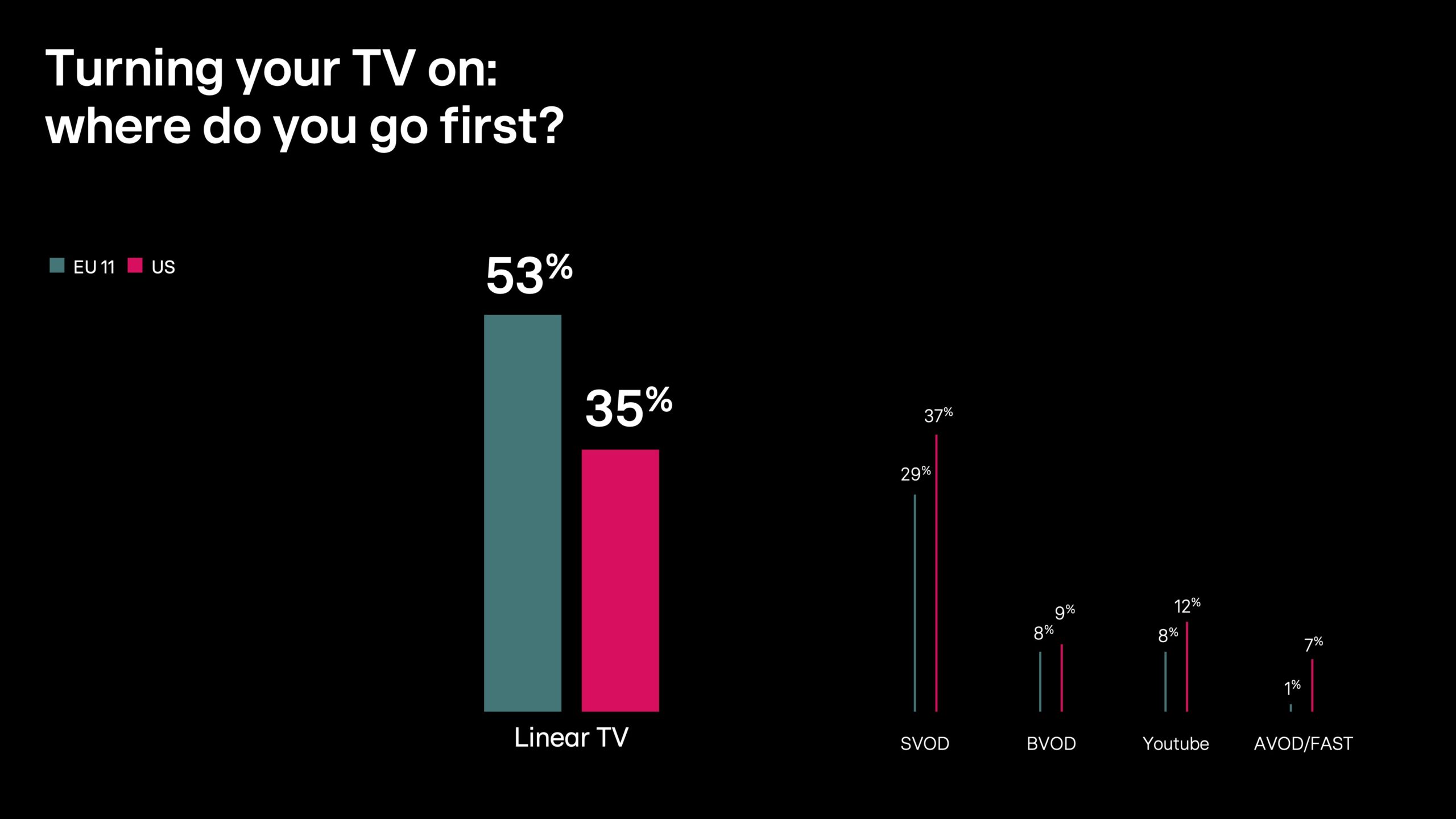European viewers ‘less tolerant’ of ads than in the US

More US viewers watch ad-funded and streaming video content each week than Europeans, according to a new study.
RTL AdAlliance’s third wave of The New Life of the Living Room research compared attitudes towards video content between 11 European markets and the US for the first time, showing differences in preferred video devices and platforms.
The biggest distinction between US and European respondents’ video consumption habits was around advertiser-funded VOD (AVOD) and free ad-supported streaming TV (FAST) content — 62% of US viewers watched ad-funded streaming content at least three times a week compared with just 25% of Europeans.
Additionally, US viewers were “increasingly” opting for streaming, with higher proportions watching subscription VOD (SVOD) services and short-form online videos (77% and 72% respectively) at least once a week compared with their European counterparts (68% and 55% respectively).

Differing ‘tolerance’ to ads
One reason behind this distinction between Europe and US viewing preferences may be “the varying levels of tolerance towards ads”.
Those in Europe were described as “less tolerant”, although they found ads on AVOD and SVOD platforms “less annoying” than on other platforms.
Ads on short-form video platforms were perceived as “the most irritating” for both sets of participants, with 57% of Europeans in the study describing them this way compared with 38% of US participants.
Europe prefers TV sets
The research found that 76% of European respondents used their TV every day, followed by smartphones at 64% and PCs and notebooks at 41%.
However, in the US, TVs and smartphones were tied in first place, with 74% saying they used them daily, followed by PCs and notebooks at 50%.
Tablets had a lower level of usage than other devices: 31% of European respondents said they used them daily, compared with 46% in the US.
The adoption of smart TVs has also “changed the way viewers engage with video content in the living room”, with digital video content now playing a significant role.
Nonetheless, linear TV remains the most popular for both groups of viewers, with 69% of Europeans and 68% of US viewers reporting they watch it at least once a week.
In Europe, 53% listed linear as the first destination when watching the TV, compared with 35% of those in the US. A higher proportion of US viewers went to an SVOD platform when first turning on the TV (37% versus 29%).

Content overwhelm
RTL AdAlliance’s study also uncovered a widespread feeling of “overwhelm” when it comes to choosing video content — 60% of European and 64% of US participants said they “do not know what to choose” when faced with the sheer amount of video content available across platforms.
Aurélie Brunet de Courssou, marketing director at RTL AdAlliance, explained: “The paradox of choice is an emerging trend in video entertainment. Users value the diversity and enjoy content across many different devices and platforms, but they crave simplicity to access their favourite shows and movies.”
Brunet de Courssou highlighted bundled offers as a “signal” of this shift, with 44% of respondents in the US “embracing” such propositions and 38% in Europe “eyeing” them.
She stressed: “Simplicity, trust and proximity are the key media trends shaping content and ad choices. In a climate of AI and social media distrust, credibility and relevance in media are paramount.”
The study was based on a quantitative survey conducted in February with more than 10,000 respondents aged 18 to 64 across Denmark, Finland, France, Germany, Italy, the Netherlands, Norway, Spain, Sweden, the UK and, for the first time, Belgium and the US.




